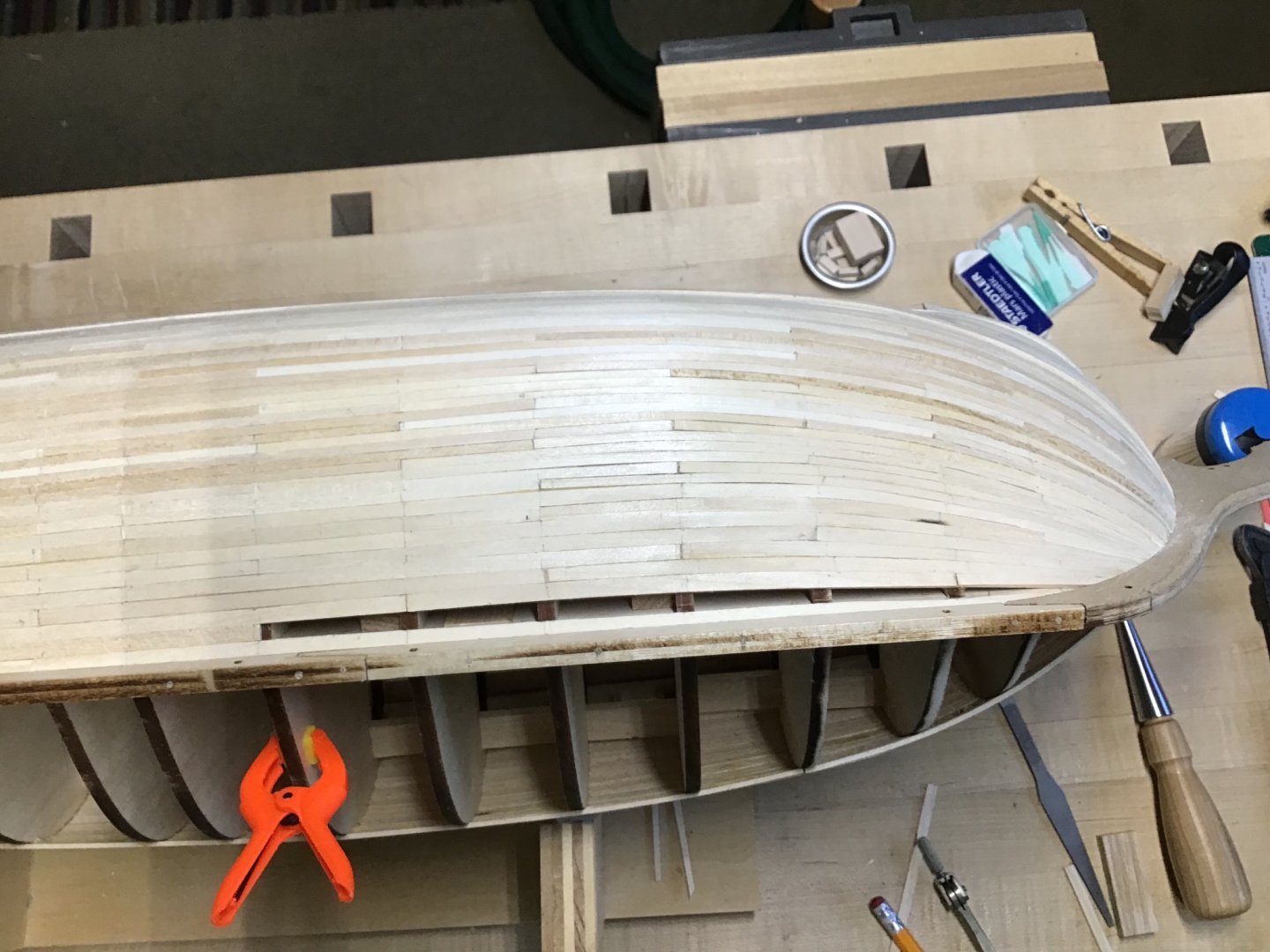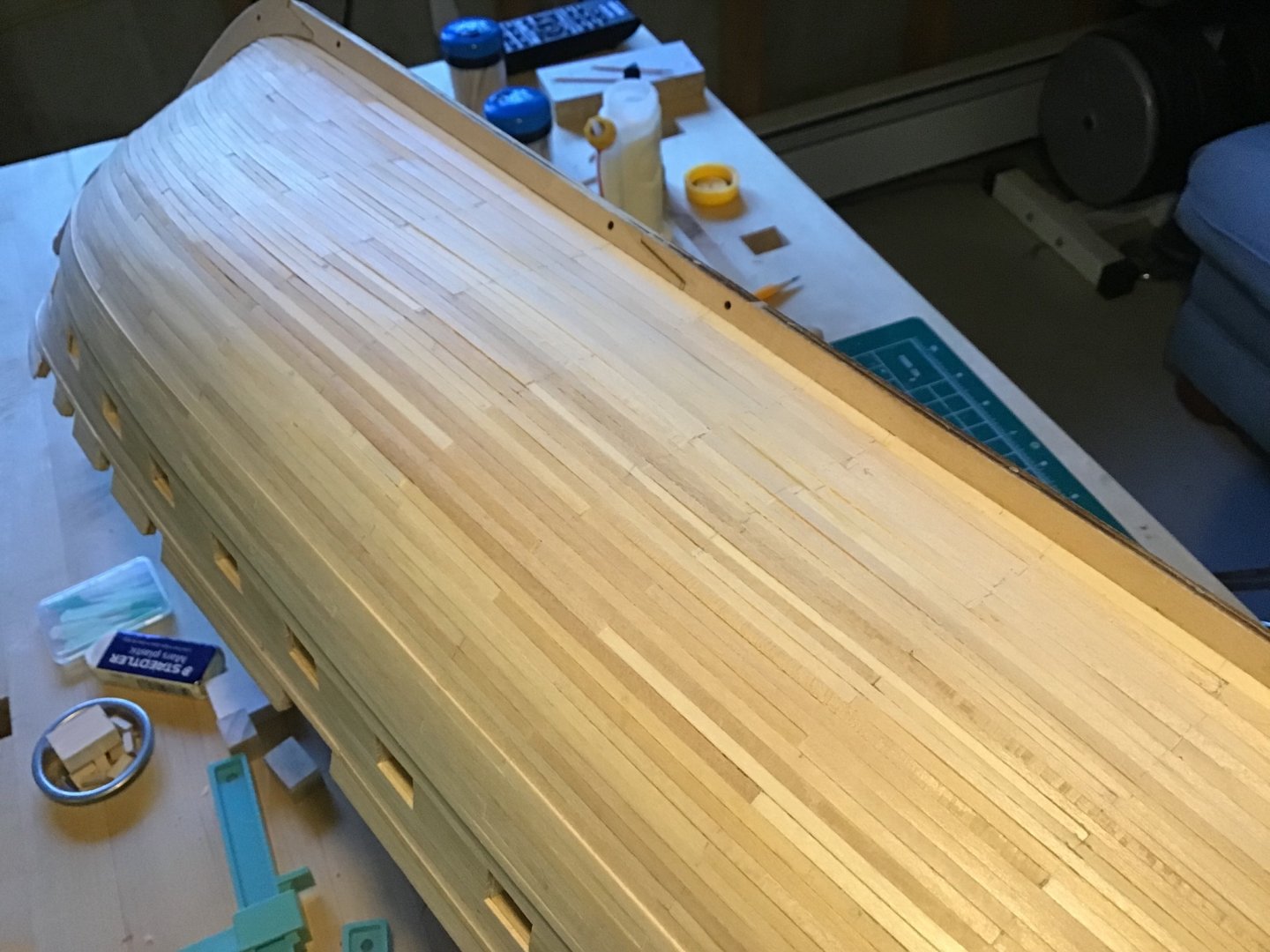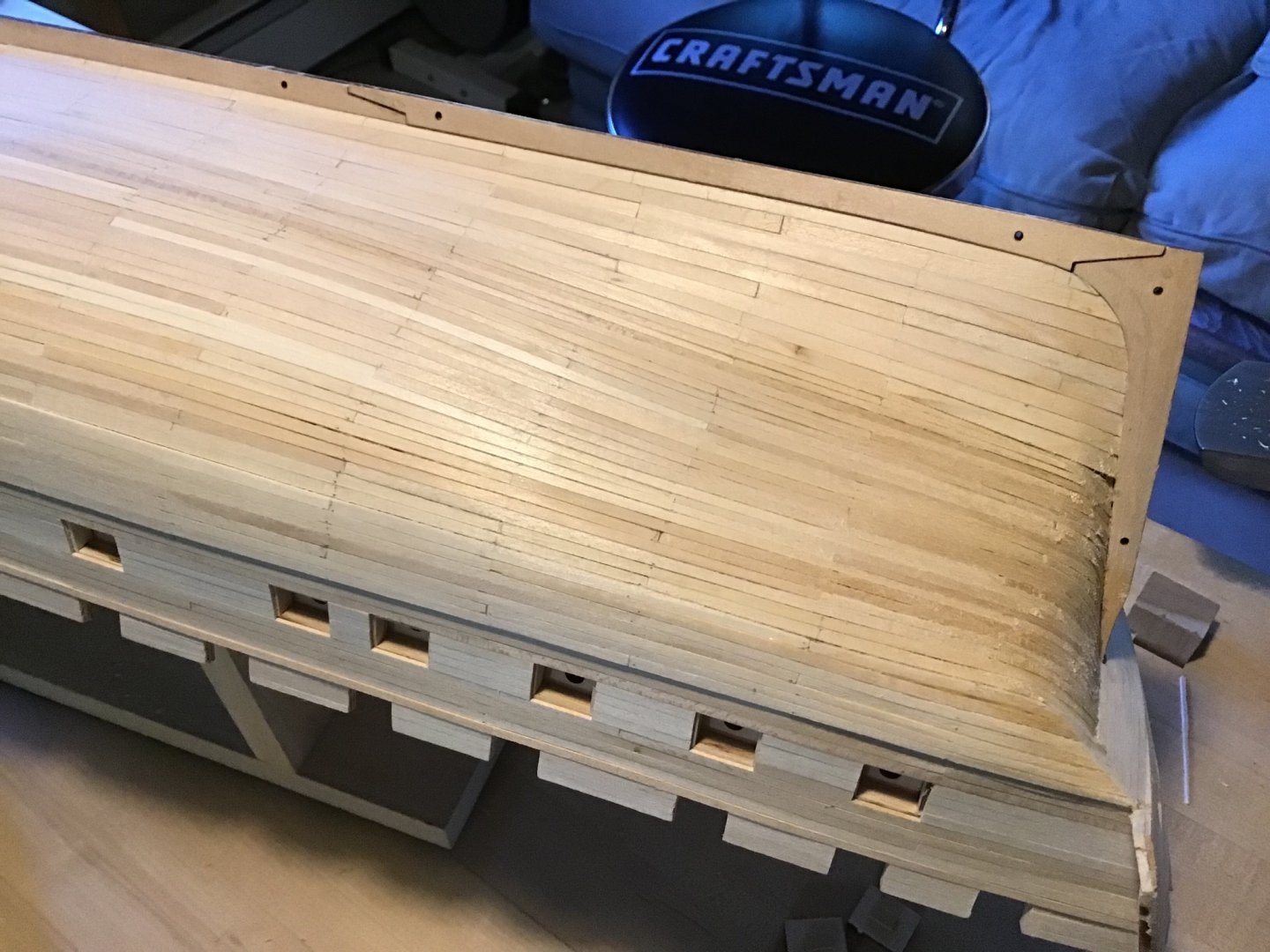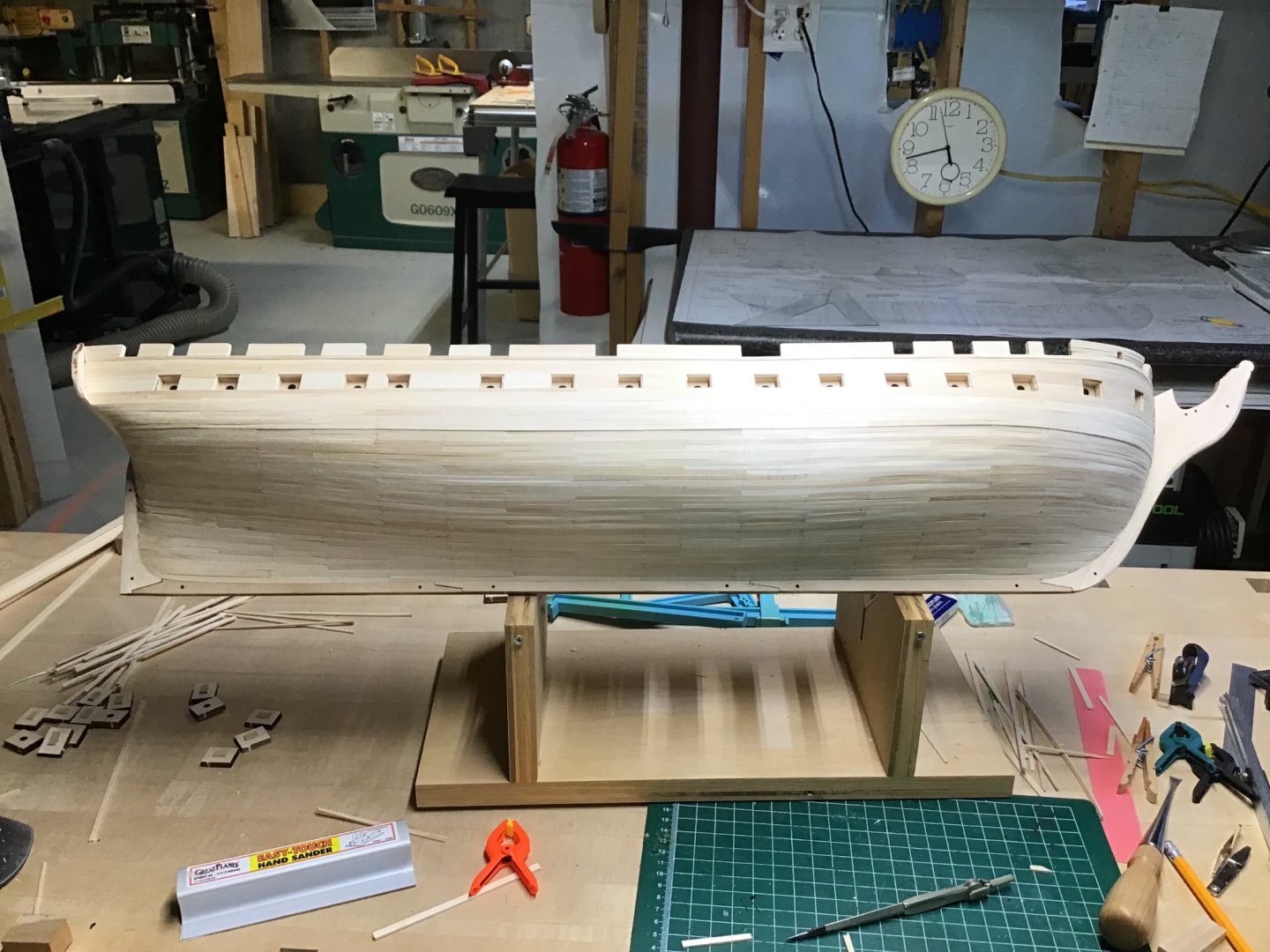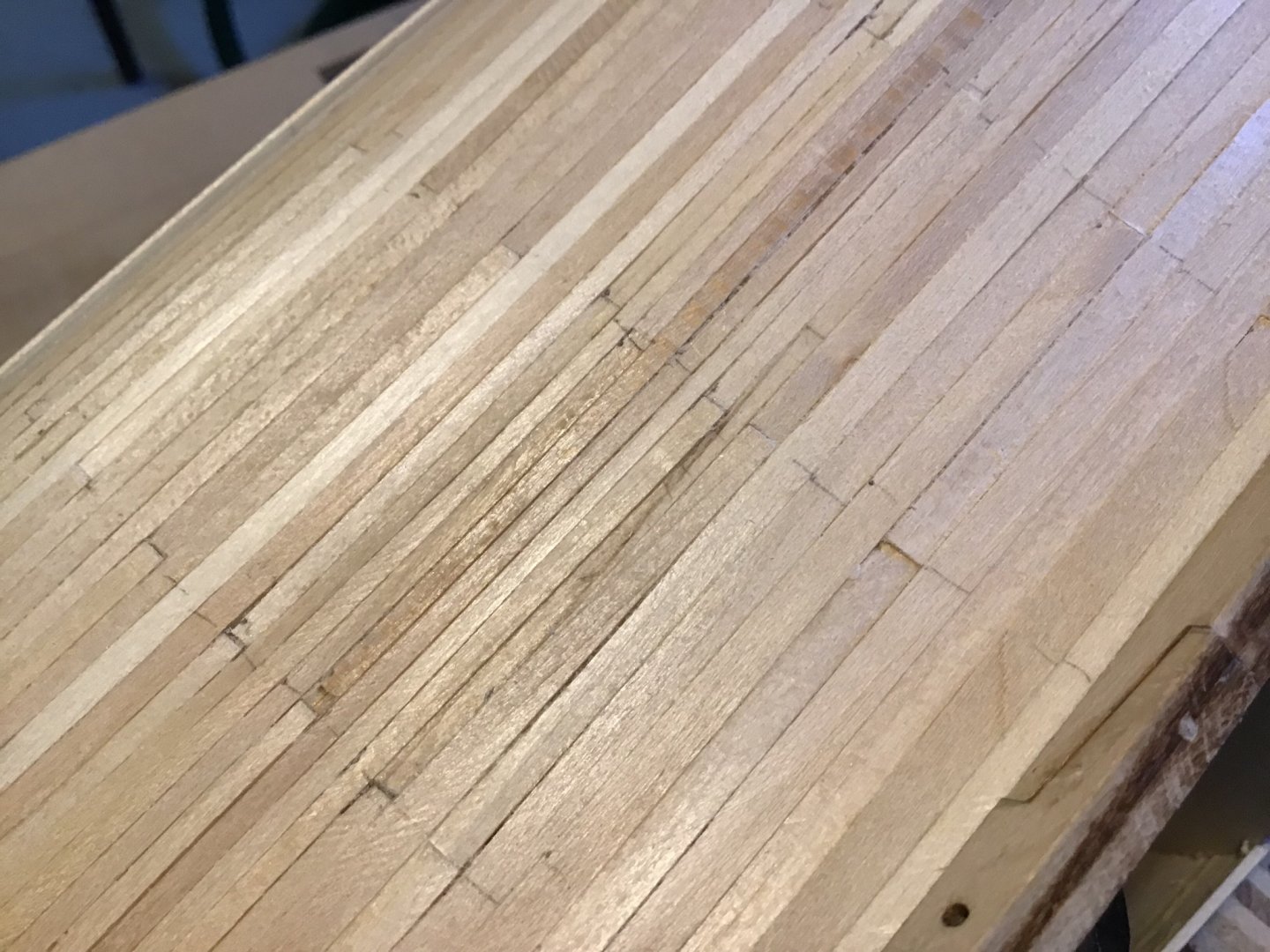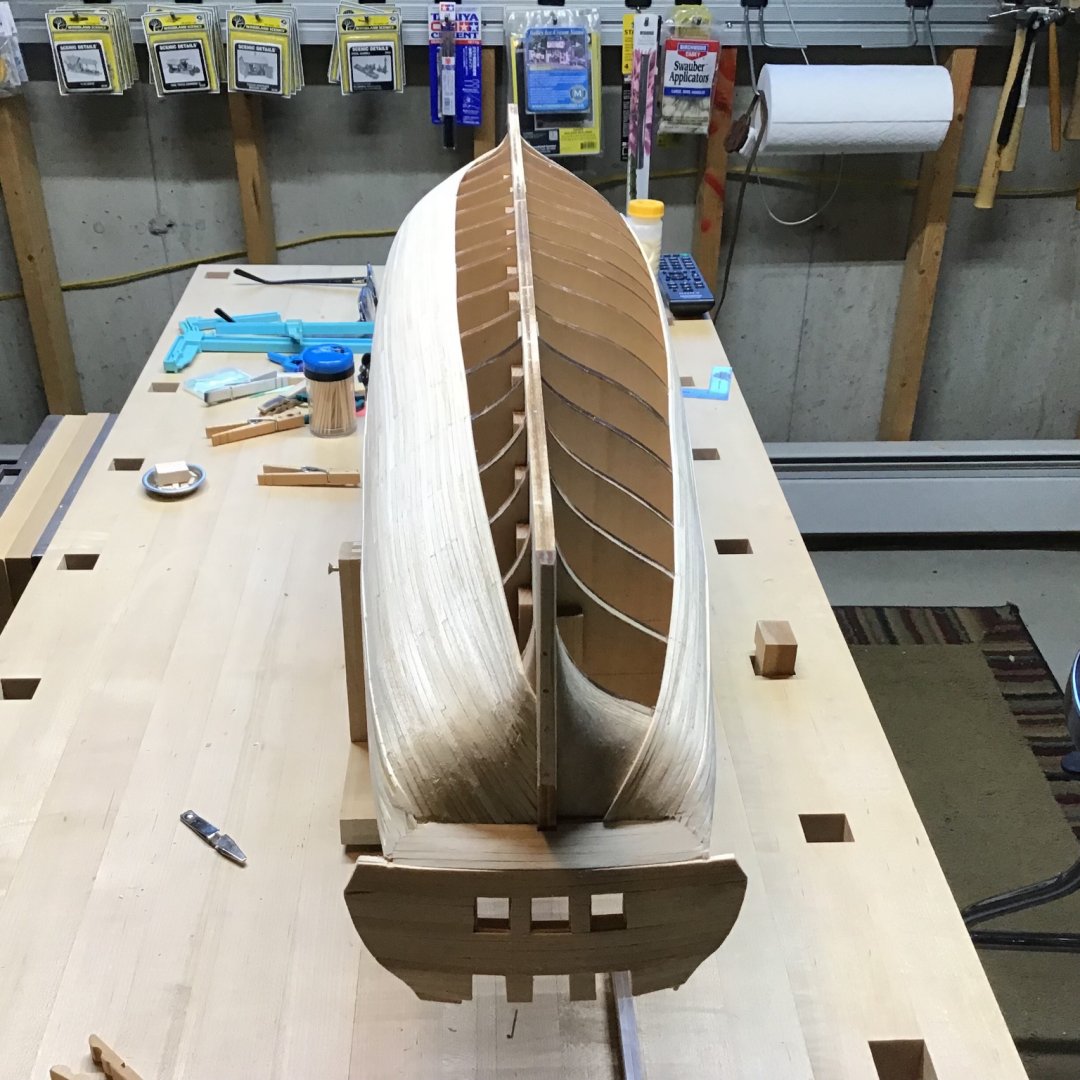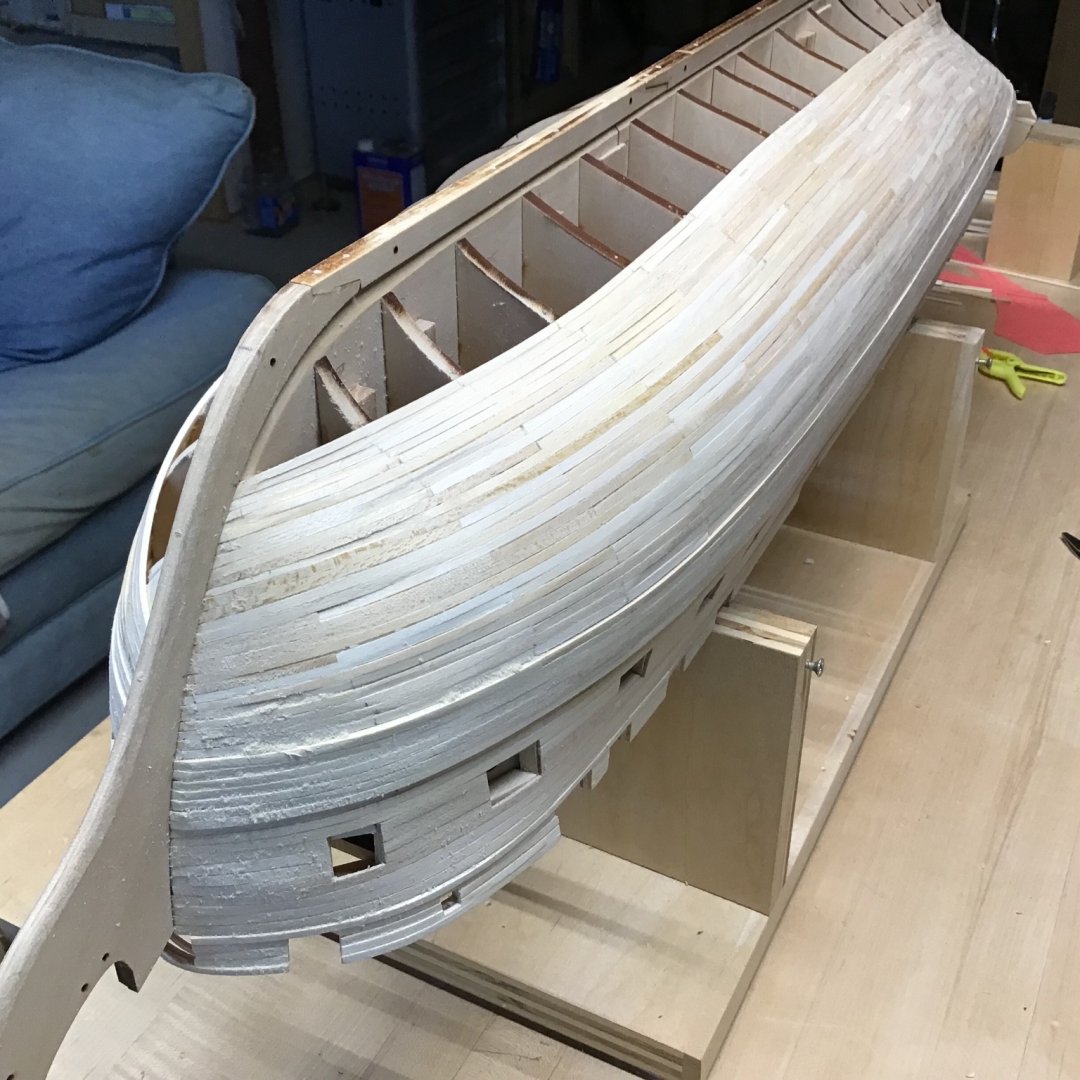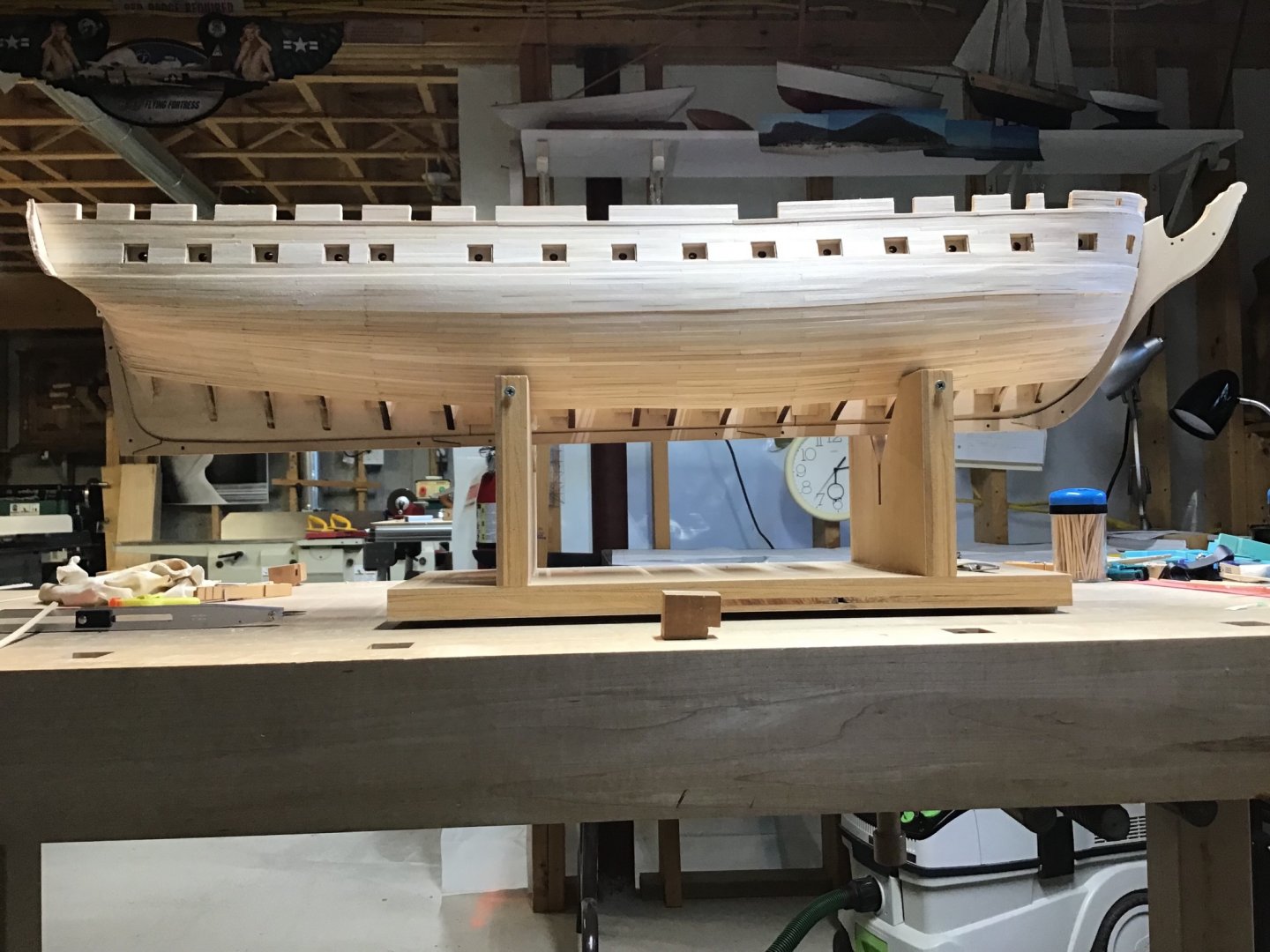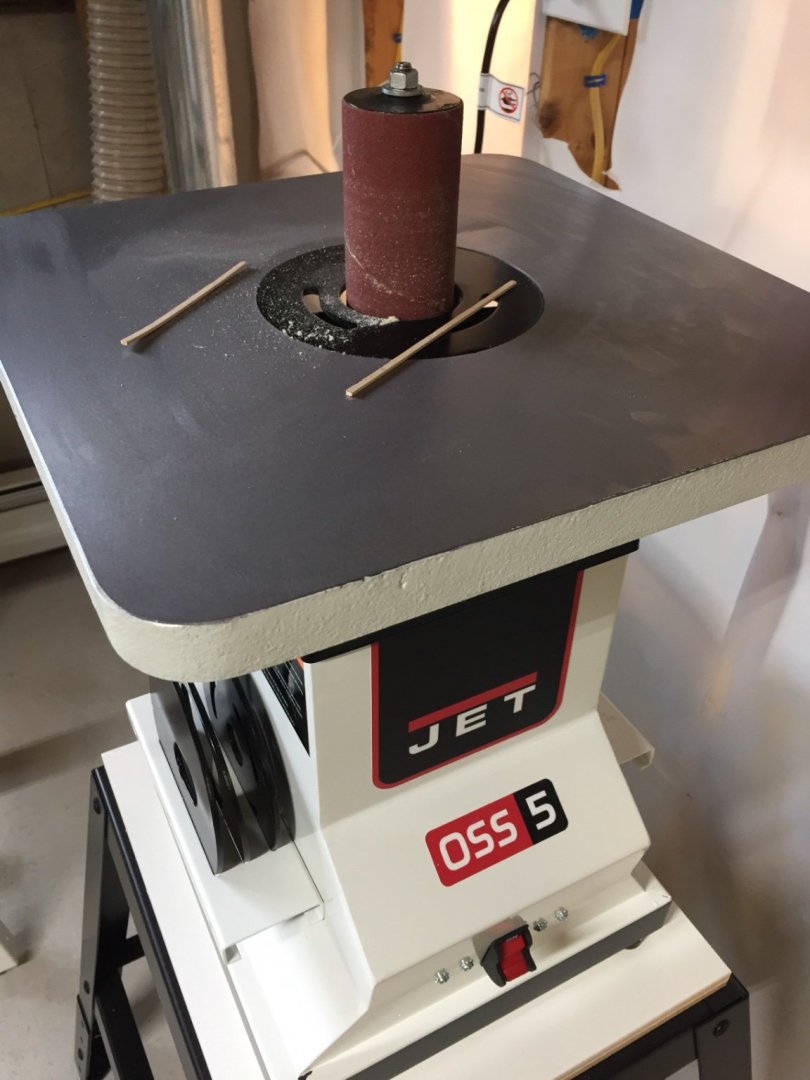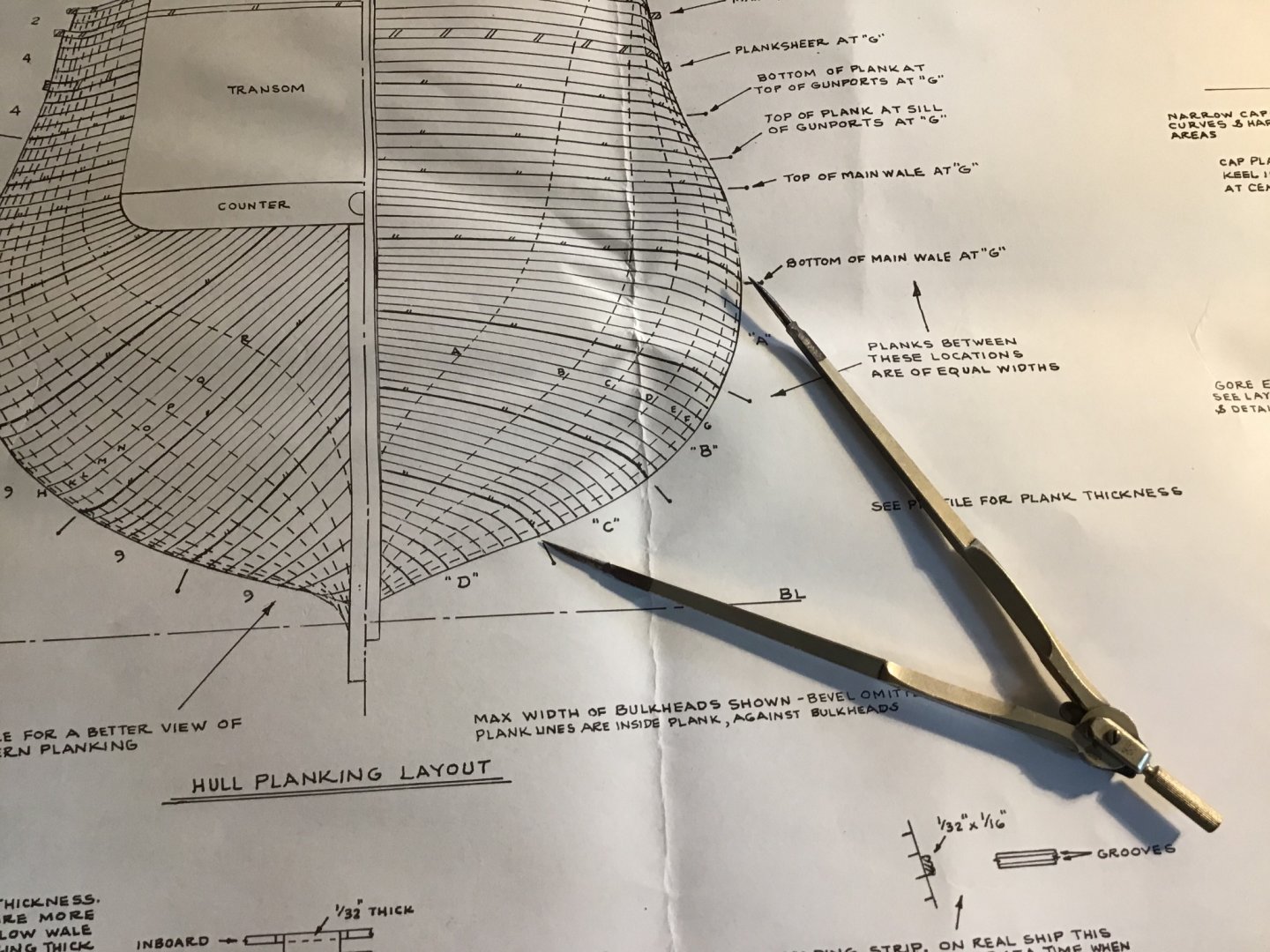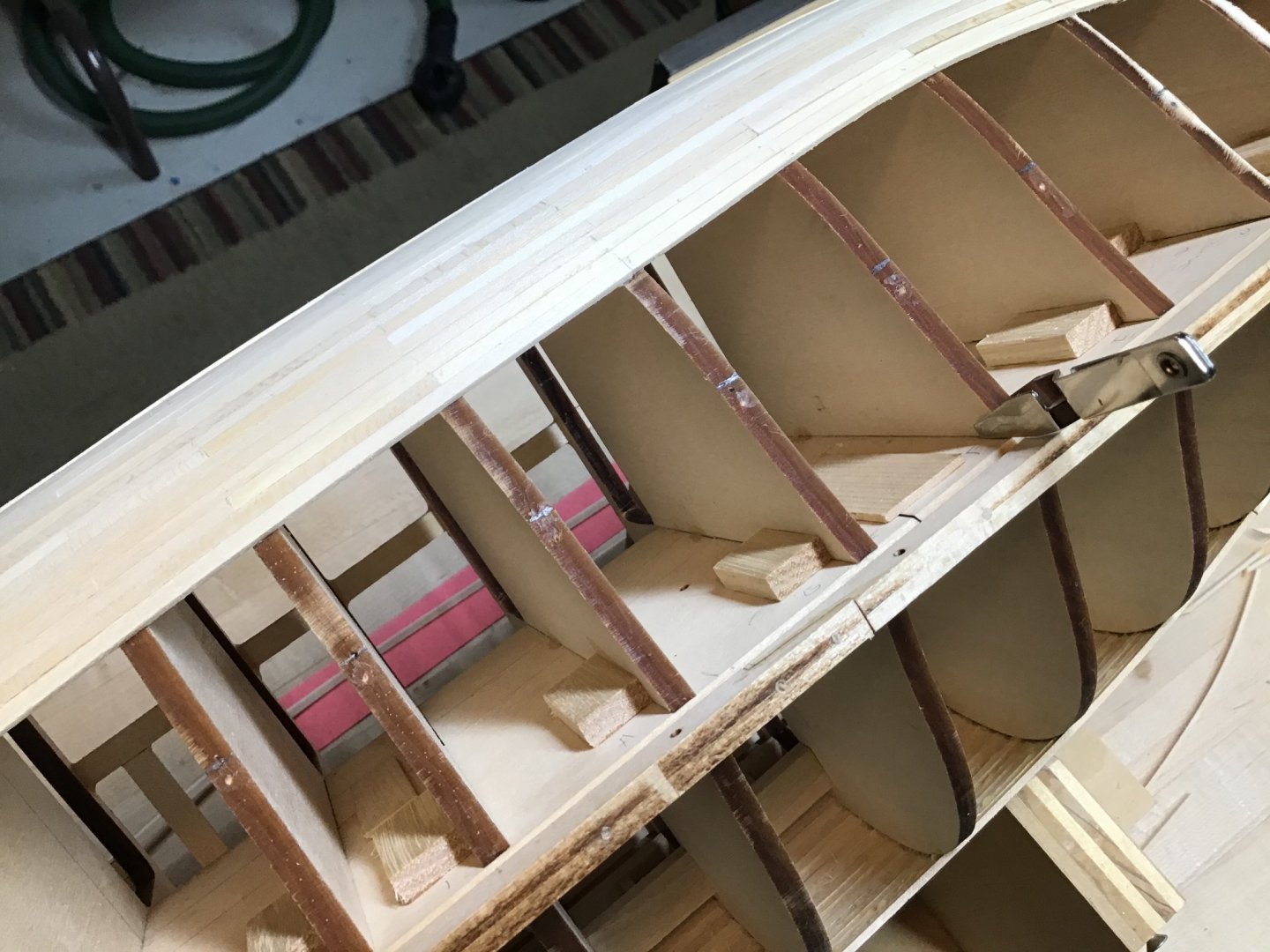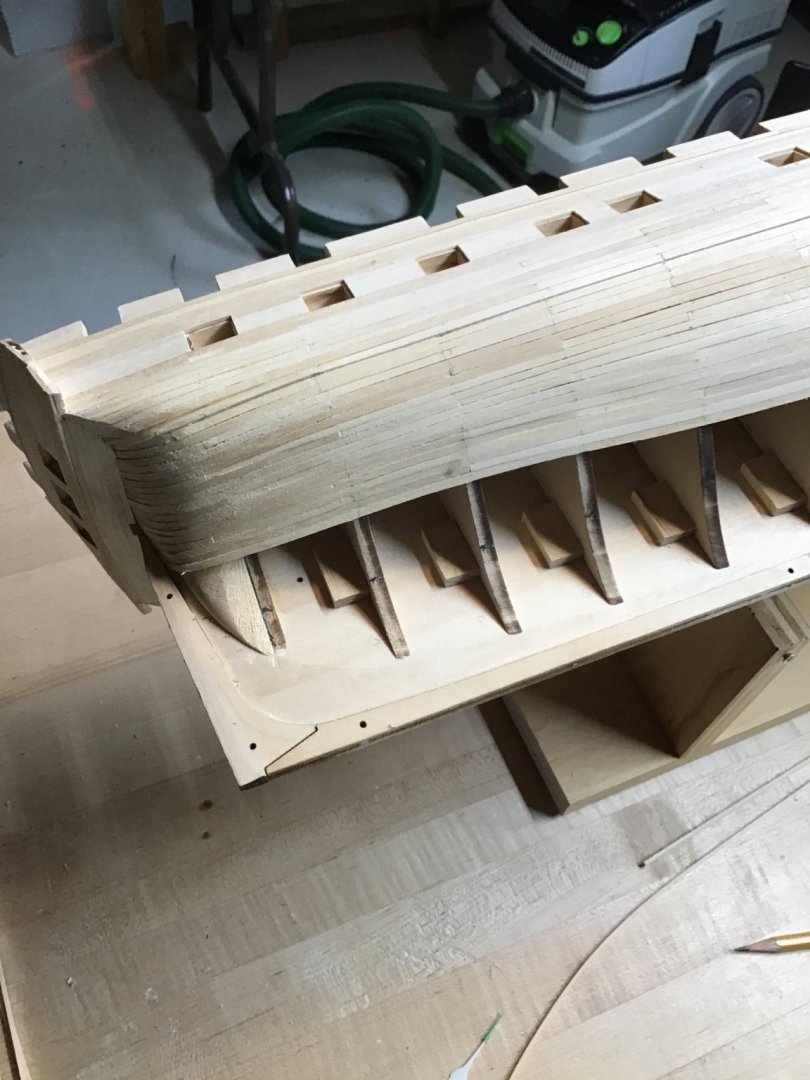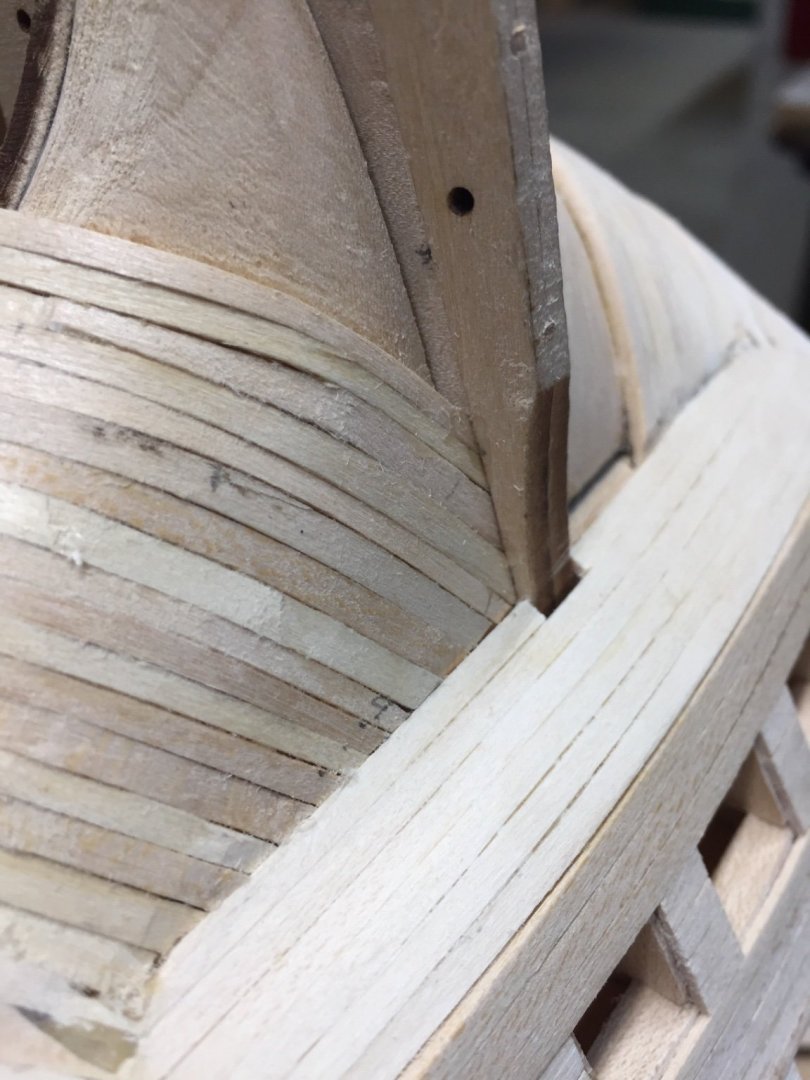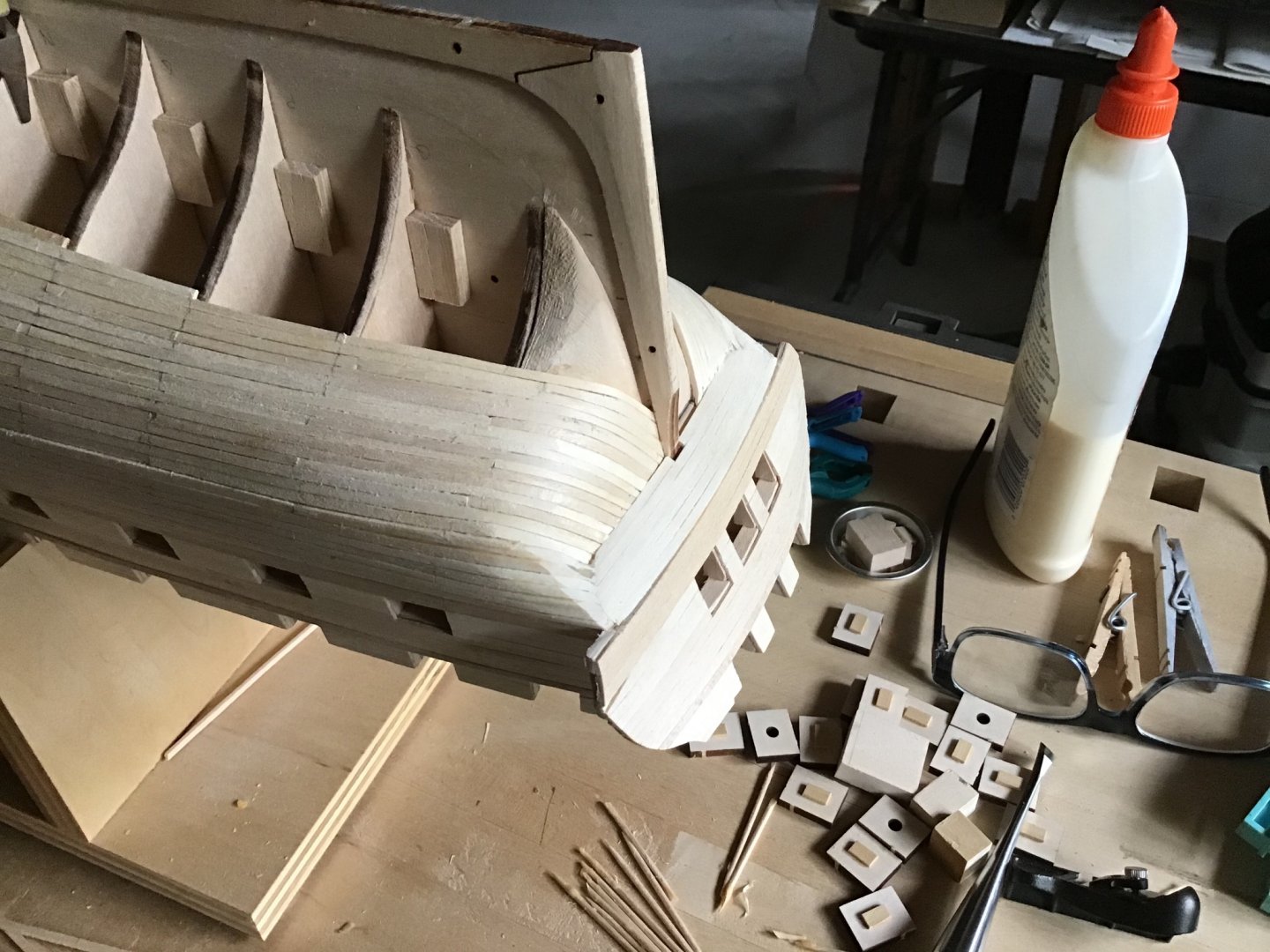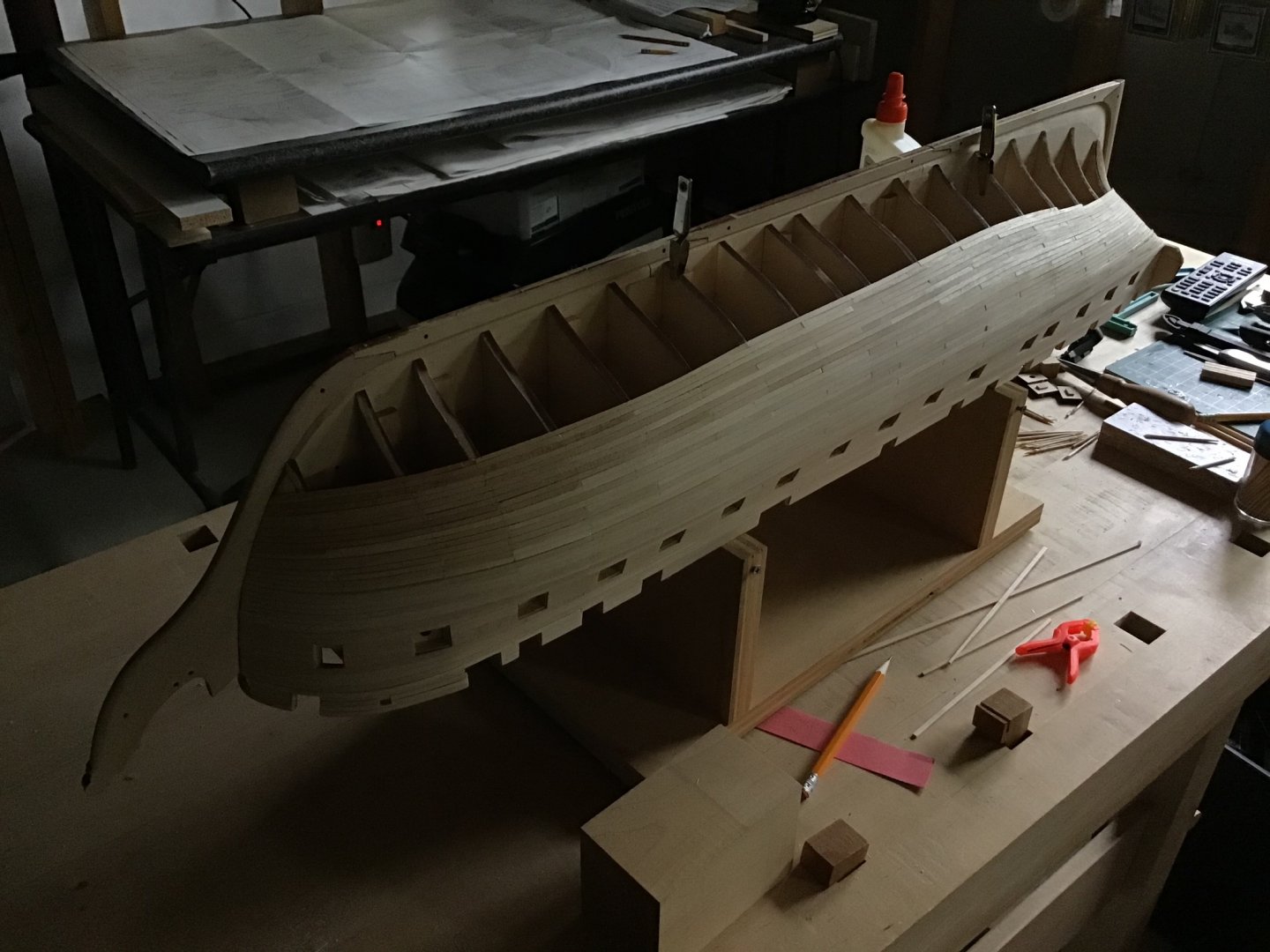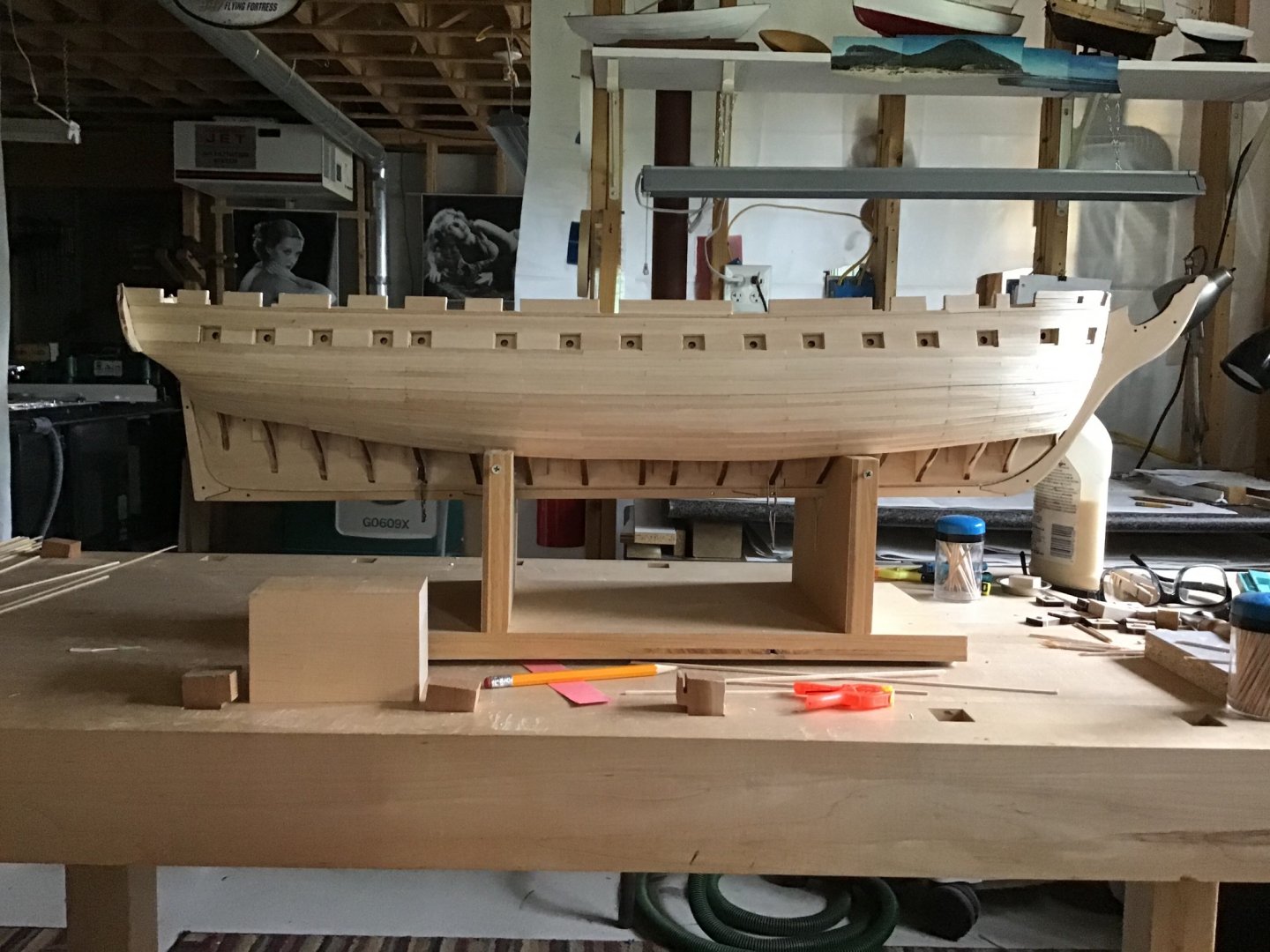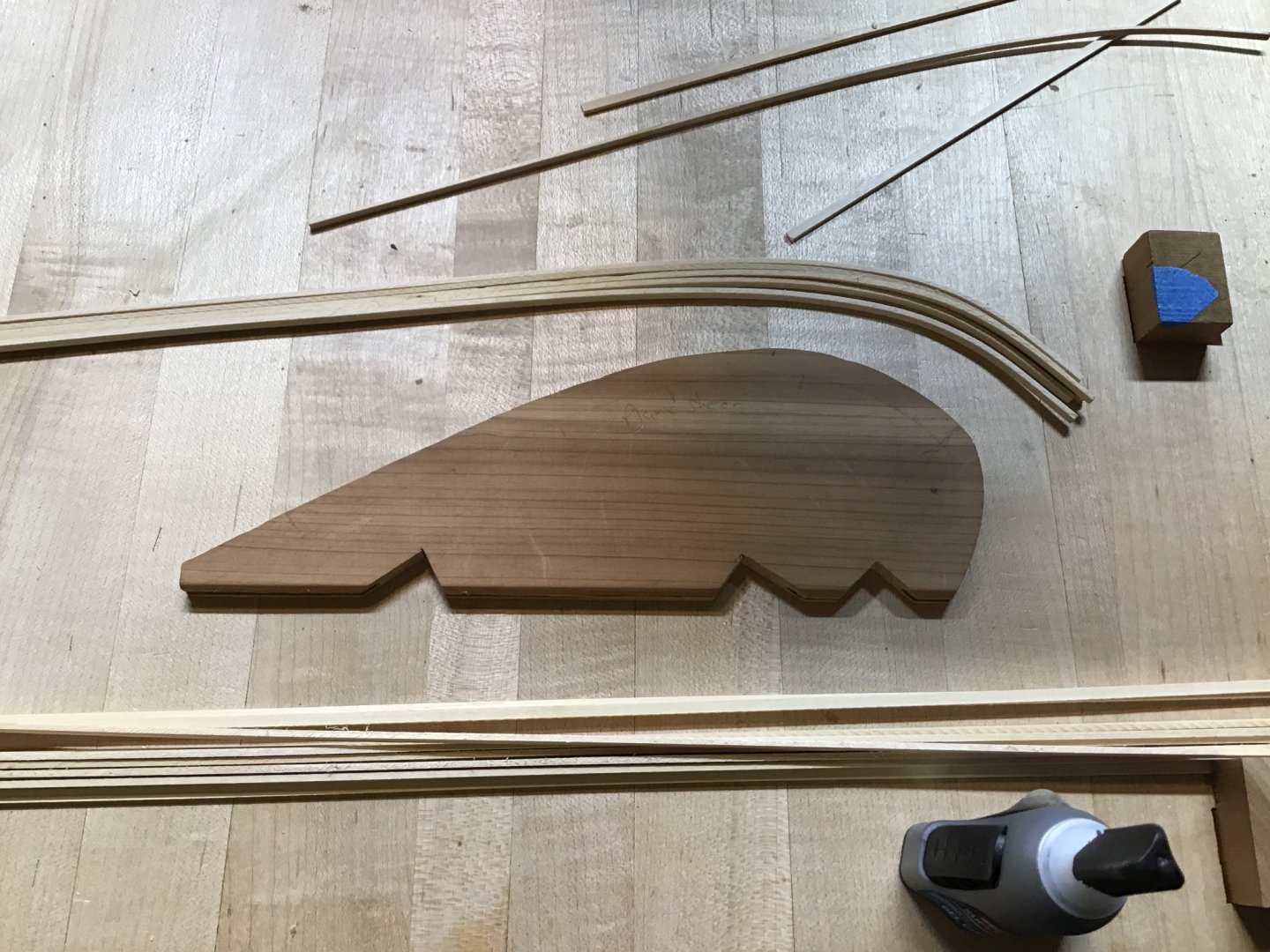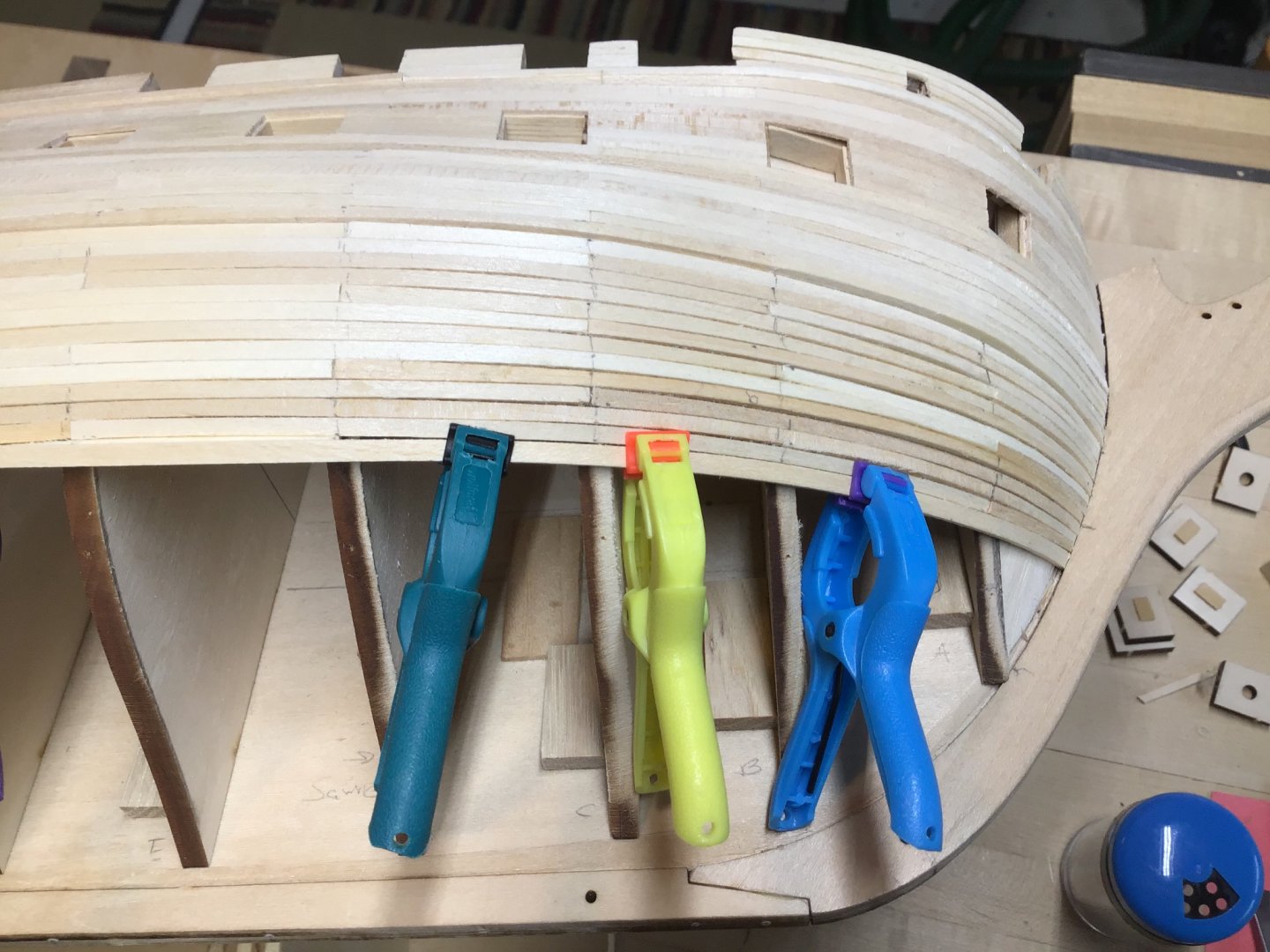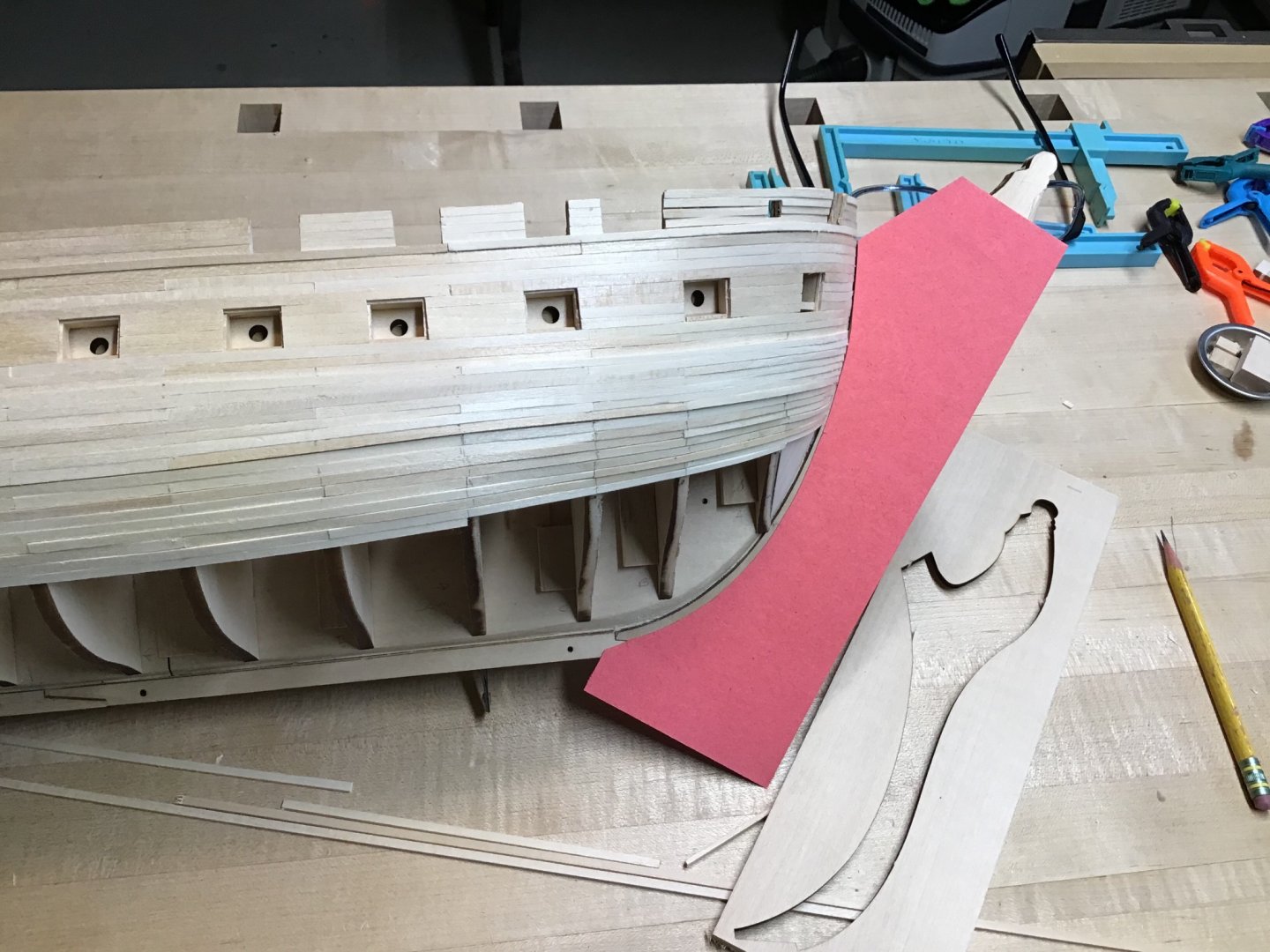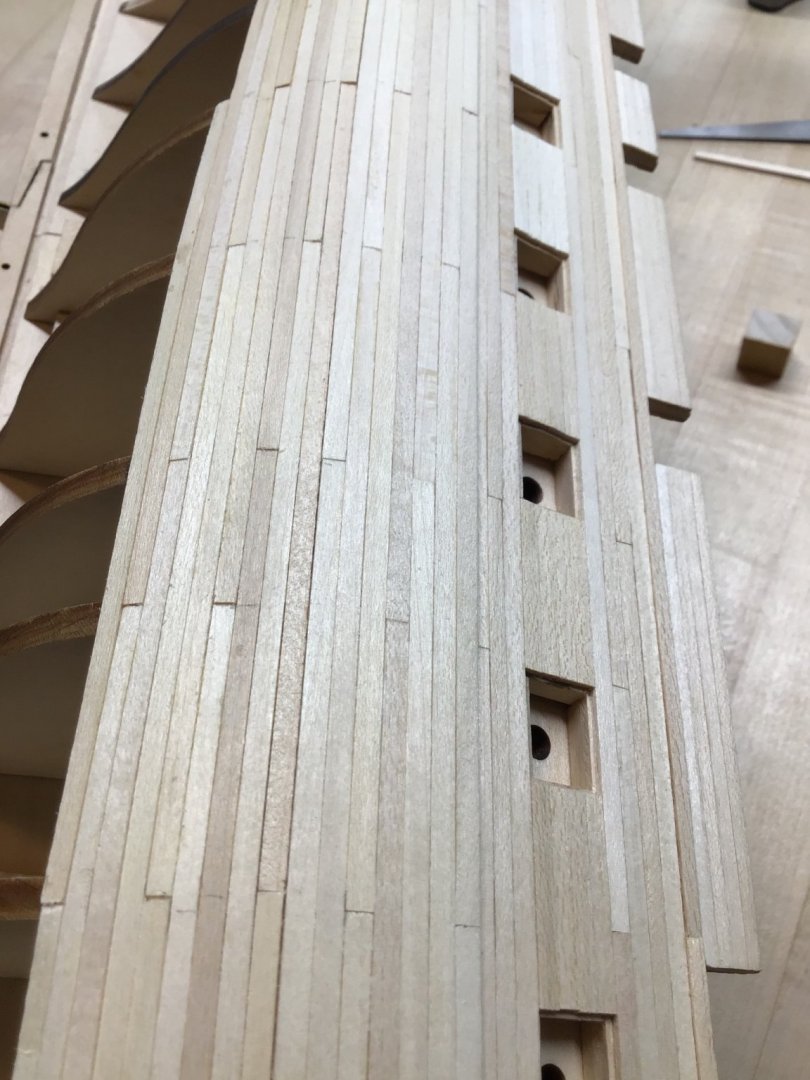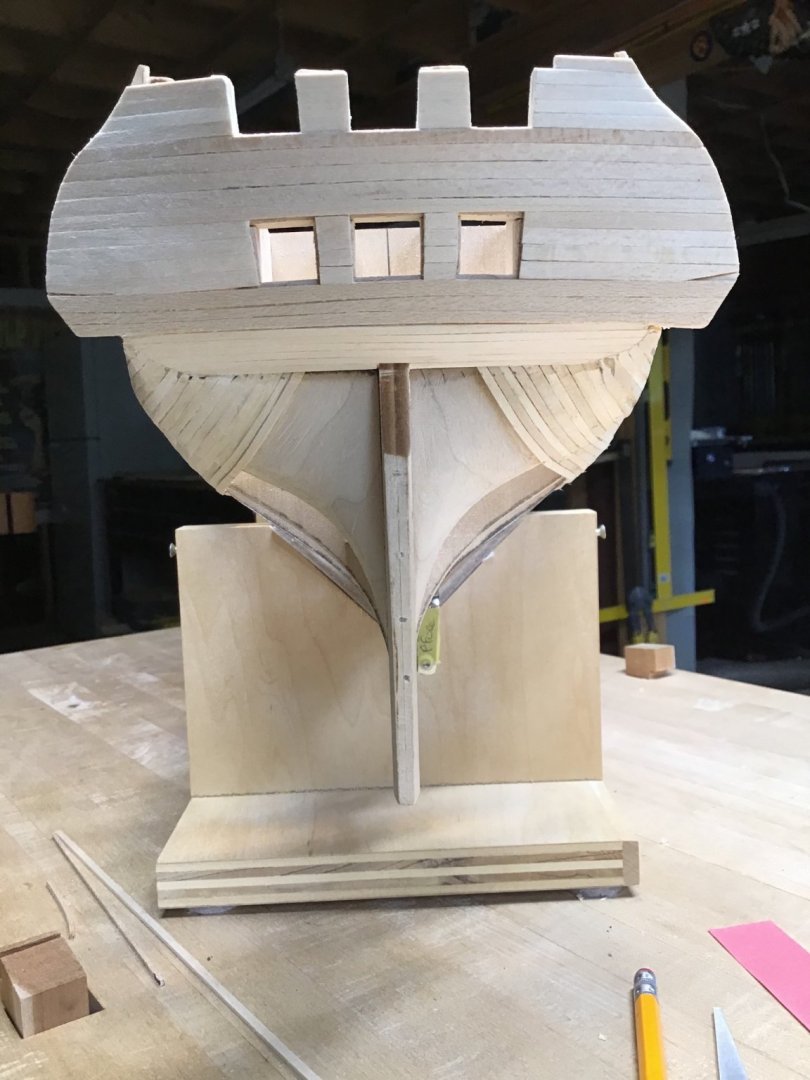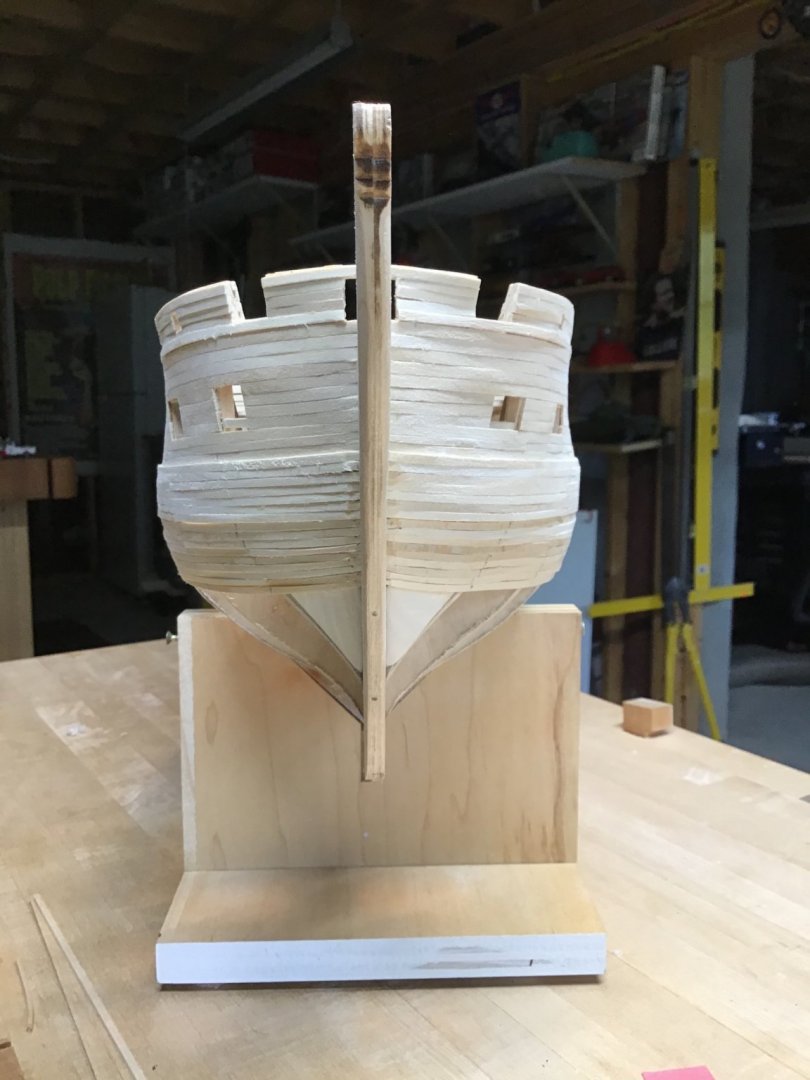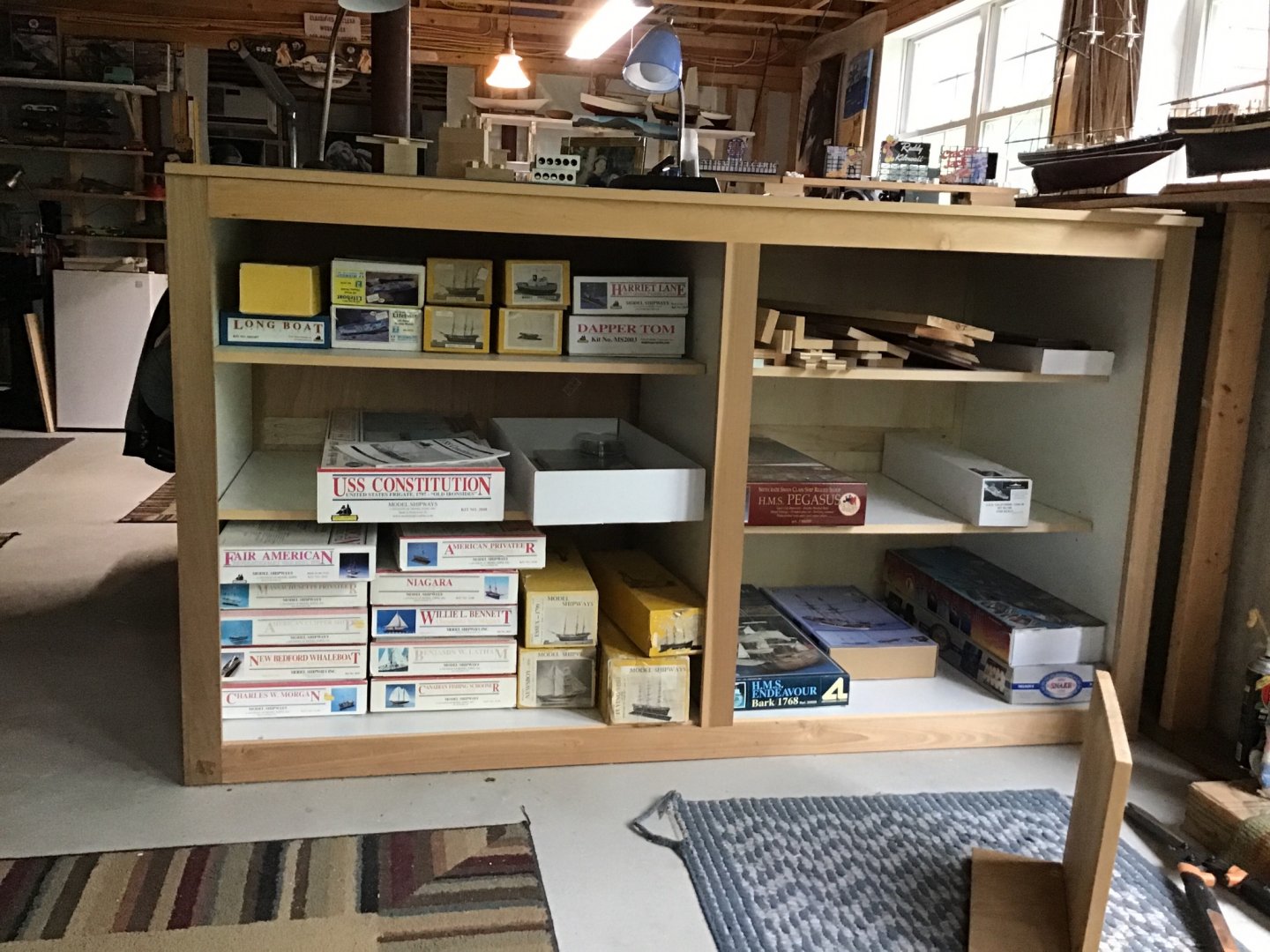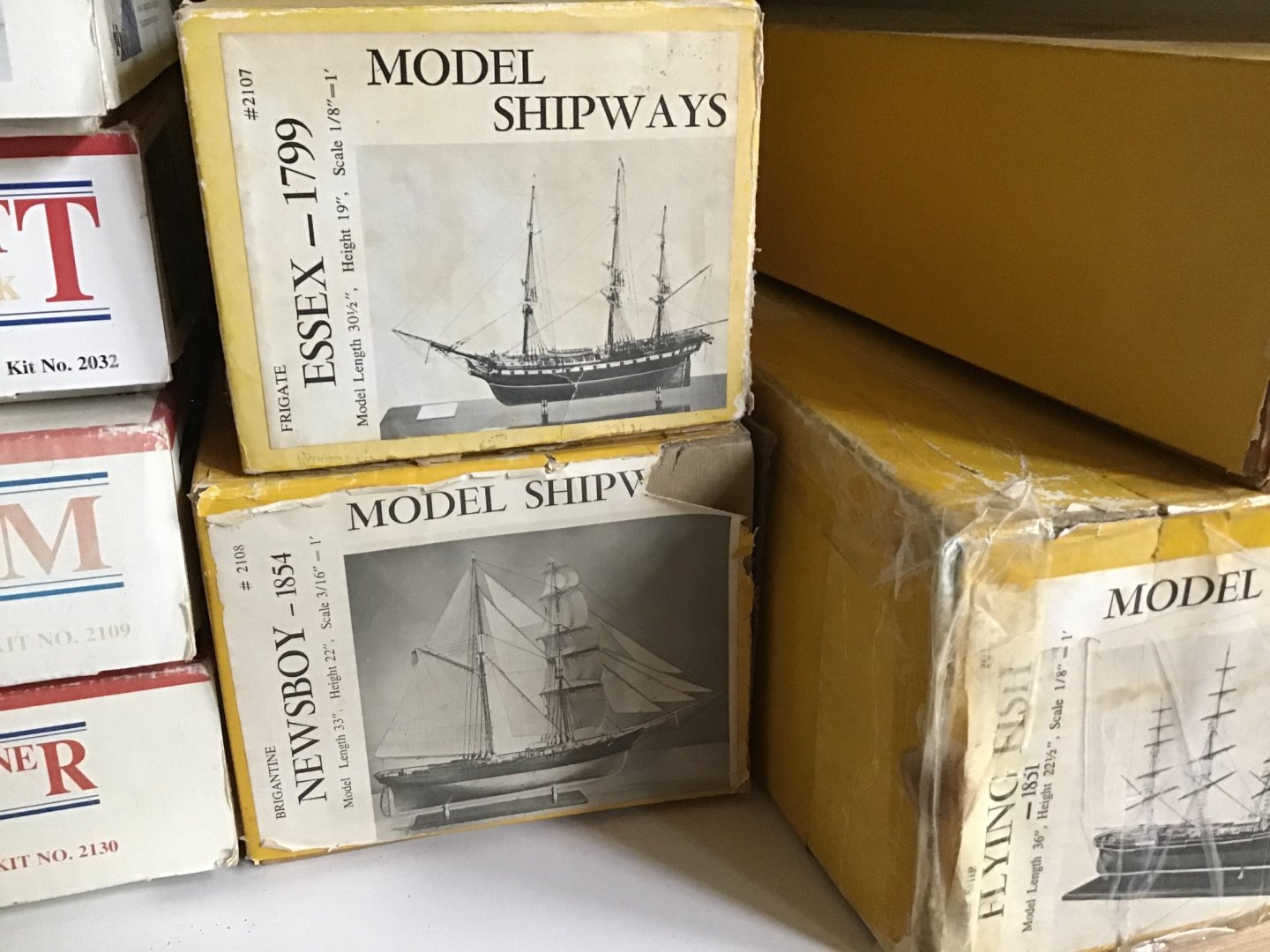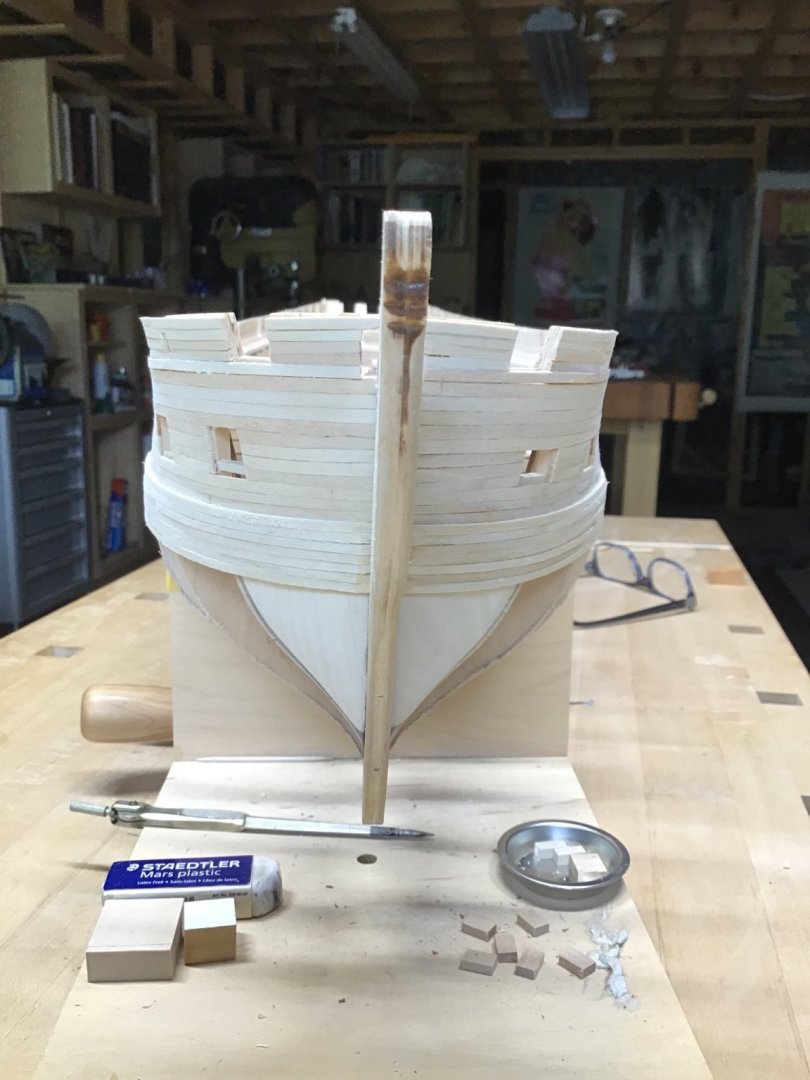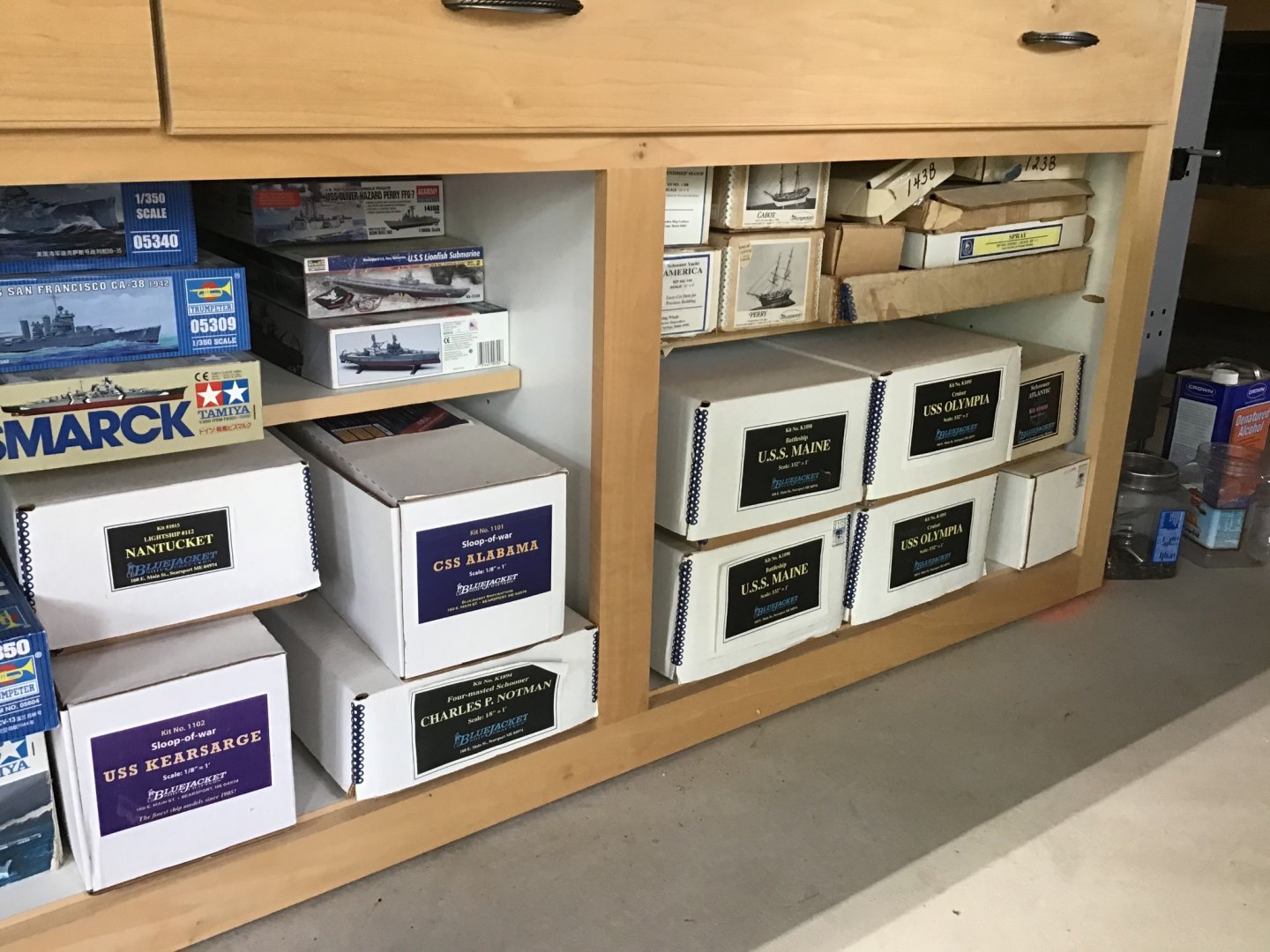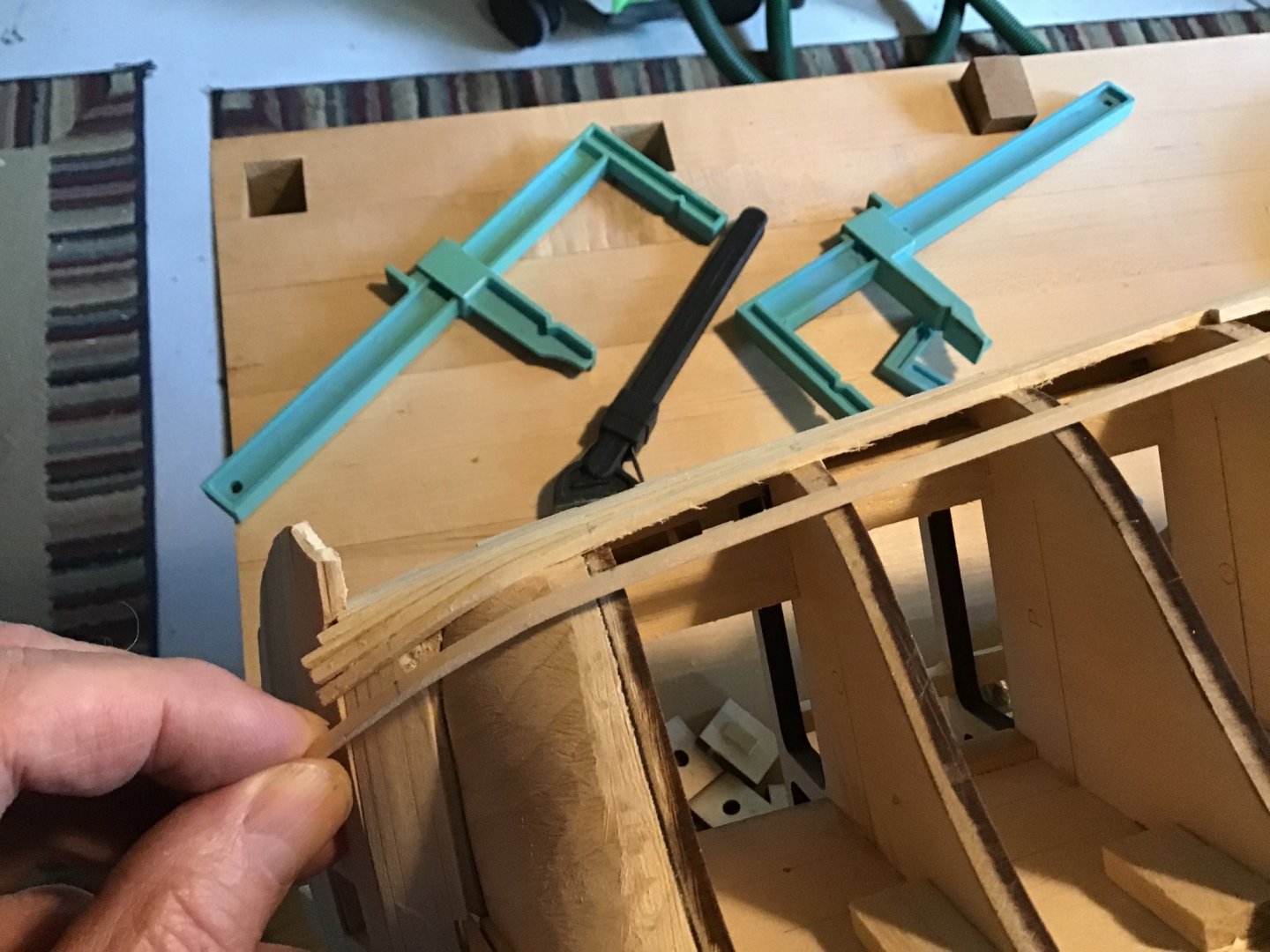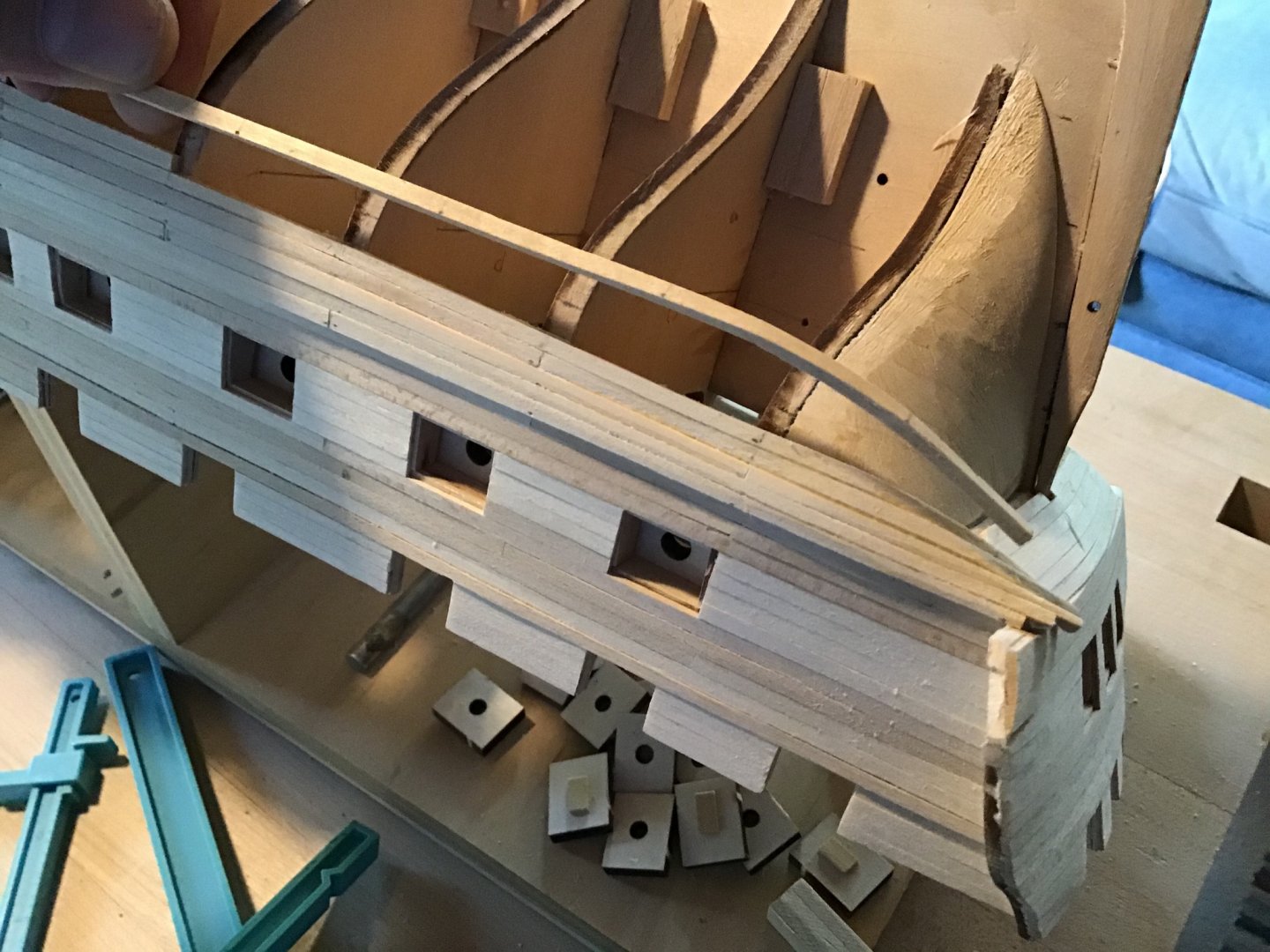-
Posts
740 -
Joined
-
Last visited
Content Type
Profiles
Forums
Gallery
Events
Everything posted by ERS Rich
-
Belt D Installation - Starboard Side Belt D base plank width is wider 3/16” vs 1/8” for Belts A, B, and C. This belt is much easier to install along the stern. First picture shows the open area for the last plank. Notice the plank along side the keel is already installed. Seems easier to fit the last plank between two planks rather than a plank and the keel. Next three pictures show the run of the planking and the last picture tries to show the plank width difference between Belt D and the others. Some smoothing has been done, more to go, it’s a job I like to do in stages. Thanks all for the encouraging words. Much appreciated. So let’s keep this log going…
-
Hi JS, Thanks….it’s all about making mistakes and dealing with them….they happen all of the time. I’ve been blending a little as I go, thought is to deal with the wale after completing all the planking. Will end this log after installing Belt D. And if you don’t mind, will include a link to your log. Going forward I’ll post pictures of my Constitution after major milestones, rather than construction steps, to avoid redundancy. Good to hear from you.
-
Good morning....suggest adding a flat and half round wood file to your tool kit....offers tighter control over sand paper.... Looking good! Cheers
-
Belt C Installation - Starboard Side As before, use the plan to transfer the location of the bottom of Belt C, in relation to the bottom of the wale, to each bulkhead, the stem, and stern post. Picture 2 tries to show the pencil marks on the bulkheads. On my model the widest part of Belt C is bulkhead F. Belt width is less on all other bulkheads. Belt C will be 9 planks wide along the entire length. An ongoing problem has been my tendency to leave the planks going into the stem and stern post rabbets a little wide. Also the mark for the bottom of Belt B at bulkhead P was off, hence a slight up wave at P, noticed this after about strake 6 in Belt B, by this time it was too late to compensate - Picture 3. Actually don’t mind making and fixing the mistakes - for the experience. Especially when they will not effect the appearance of the model. After all the work so far, feel confident that I can make a plank into any shape required. Given that the belt is widest in one location, bulkhead F, even wider than bulkhead P, there will be enough width to compensate for the wave. Lets see how it goes with Belt C.
-
Forming the Forward Planks Planks along the forward end to the stem need to be formed with a bend and twist, just as the planks on the aft end to the stern. Planks were first bent into a curve with the bow cedar form. Picture 1 shows the form and a handful of planks after forming. A plank is then given a short soak, and steamed to reduce the moisture. Next the hull itself is used as a form by clamping the pliable plank along the forward end, and allowed to dry thus establishing the twist, Picture 2. The forward end of the plank is tapered and set in the rabbet. Later, when dry, this plank will be cut to length and tapered.
-
Hello JS, Using the guide from Mr Hunt as well. It’s fielders choice here, went with the dividers because have a pair purchased years ago, have not had a problem with tightness. As you say. marked the plank width at each bulkhead. Prefer removing the material with an upside down hand plane in a vise, it’s like a mini joiner. Found the difficulty with this is it’s easy for the cut to become a bevel along the tapered edge rather then a right angle. I use a sanding block to square the edge to a right angle. Mr. Hunt’s method is good. I have the whole set, and have built the Armed Virginia sloop and Pride of Baltimore with them. I’m deviating from the guide by doing all the hull planking before the deck. Plan is paint for the hull and bulkheads. Deck will be pine stain. I don’t like the brown/black stain for the deck. I’m going to prime with a light coat of rattle can shellac for an initial seal, take care of imperfections, a light rub down with steel wool, then airbrush, with an Iwata RG-3L HVLP mini gun, a coat or two of artist acrylic gesso. Artists use gesso to prime canvas. Since I have a Caldercraft Snake kit with copper plates....will paint the copper, again with the minigun, Tamiya acrylic. The advantage of the mini gun is it lays down a high volume of paint - a wet coat yielding a smooth finish. See Paul Budzik on Youtube. Thanks for getting in touch!
-
Belt A Installation - Starboard Side Belt A consists of about 90 planks, 45 per side. As before for the Wales, used the plan to mark the belt widths on the bulkheads. The max plank width is 1/8”, the kit given stock is slightly over sized so needed to rip it down to 1/8”. As with the Wales full width planks are used from bulkheads E through M. A construction paper pattern was made of the stem curve, from the billet holding the stem piece. The pattern was used to mark the belt width on the stem. Again the proportional dividers were used to mark the planks for tapering. The wood template for the bow curve (made earlier) was used to bend the bow and stem planks after a soak. An electric steam kettle was used as a source of steam to bend the slight curves in the planks coming off amidships. A smooth run amidships is easy. Looking for “sameness” from port to starboard sides at the bow and stern. Pretty close at the bow, a little off at the stern. For me I need to pay attention to tapered plank width, have a tendency to leave them over wide. Onward to Belt B, interesting as will be covering the remainder of the counter, and rounding the corner to the Sternpost.
-
Hello GuntherMT! Yes, quite a few kits to build.....collected for quite a few years while in corporate.... Here’s the other half...... Constitution may be the last plank on frame, at least for awhile. It’s a colossus of planking. Completed Belt A this week, port and starboard together are about 90 planks, this week it took from Tuesday to Friday to complete the Port side. Thinking, ok I know how to plank, so going forward go with solid hull, which allows more time for topside work. Bluejacket Maine and Olympia are on my mind.....though they appear to be a colossus of photo etch..... Also have a vintage Newsboy kit....interesting as it is schooner rigged with a square rigged foremast. Stay tuned and thanks for checking in....
-
Thanks KLB.....going forward, after many projects, may no longer build plank on frame and stick to solid hulls....planking is just too time consuming and takes away from fitting out the deck, masting, and rigging. Scratch building? To each his own. Not sure if I’ll be a scratch builder. In my imagination I’m operating a ship yard that constructs ships. Shipyards take components made by others and assemble ships. That’s why I like kits. For me taking a single piece of wood, say for the stem, cutting it up into little components, then glueing it back together, is a head scratcher. Why not make the stem out of a single piece of wood and scribe and color lines for the components? Would an observer be able to tell the difference? I have a cabinetmaker/furniture makers bias, why spend time on something that either isn’t visible or can be done a faster way. It’s all good, everyone is different, as it should be. Cheers
- 139 replies
-
- Lady Nelson
- Amati
-
(and 2 more)
Tagged with:
-
Finished up the wales and did some smoothing.... Started smoothing with sandpaper....it’s seductive....however the long flat file does the best job and it’s faster.... Gearing up to plank the rest of the hull...... In the back of my mind is stopping and pausing Constitution on 5/31.....would rather build 2 at the same time...start Amati Vanguard, get it to the same stage as Constitution and complete both in parallel. Planking simply takes too much time. Or stop sailing ship construction and move on to one of the Great White Fleet battleship kits I have from Bluejacket. We’ll see.....
-
Just found this and decided to follow along....feel free to send a message if you have a question...
- 139 replies
-
- Lady Nelson
- Amati
-
(and 2 more)
Tagged with:
-
Congrats Bro! A pleasing rendition of aGrand Banks Dory. Certainly your next project will be even better after incorporating your experience! Cheers
- 85 replies
-
- Lowell Grand Banks Dory
- First Build
-
(and 2 more)
Tagged with:
-
blazing a path for others to follow....thanks
- 101 replies
-
- emma c berry
- model shipways
-
(and 1 more)
Tagged with:
-
You got through it. Like the Tung Oil. Looking at the work, may I suggest taking a look at using a wood file to clean up the board ends, rather than sand paper. Gives tighter control and crisper edges than sandpaper. Next one will be even better. Cheers!
- 4 replies
-
- Providence
- Artesania Latina
-
(and 2 more)
Tagged with:
-
Welcome aboard! Cheers!
-
Welcome aboard! Looking forward to seeing more of your work.
About us
Modelshipworld - Advancing Ship Modeling through Research
SSL Secured
Your security is important for us so this Website is SSL-Secured
NRG Mailing Address
Nautical Research Guild
237 South Lincoln Street
Westmont IL, 60559-1917
Model Ship World ® and the MSW logo are Registered Trademarks, and belong to the Nautical Research Guild (United States Patent and Trademark Office: No. 6,929,264 & No. 6,929,274, registered Dec. 20, 2022)
Helpful Links
About the NRG
If you enjoy building ship models that are historically accurate as well as beautiful, then The Nautical Research Guild (NRG) is just right for you.
The Guild is a non-profit educational organization whose mission is to “Advance Ship Modeling Through Research”. We provide support to our members in their efforts to raise the quality of their model ships.
The Nautical Research Guild has published our world-renowned quarterly magazine, The Nautical Research Journal, since 1955. The pages of the Journal are full of articles by accomplished ship modelers who show you how they create those exquisite details on their models, and by maritime historians who show you the correct details to build. The Journal is available in both print and digital editions. Go to the NRG web site (www.thenrg.org) to download a complimentary digital copy of the Journal. The NRG also publishes plan sets, books and compilations of back issues of the Journal and the former Ships in Scale and Model Ship Builder magazines.



